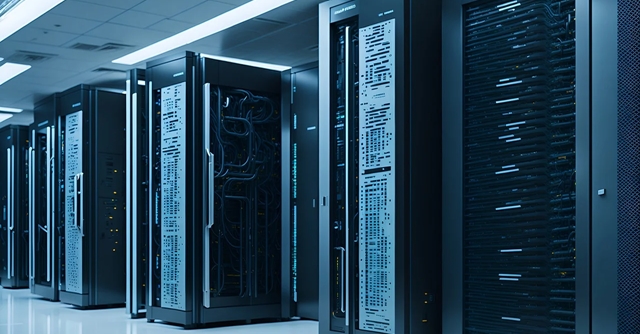
ESG compliance emerges as key differentiator for data centers amid AI-driven innovation


The artificial intelligence revolution is here, and with it comes a new wave of challenges for data centers worldwide. As AI technologies—especially generative AI—become central to modern business, the demand for computing power has skyrocketed.
Experts suggest that data centers are consuming up to two times the energy required to handle AI workloads. This surge is forcing the industry to rethink its approach to environmental, social, and governance (ESG) goals.
The growing prevalence of AI technologies has led to a surge in the demand for supporting infrastructure among Indian enterprises, with up to over 40% observing a doubling in their compute power and storage requirements, a September report by storage company Pure Storage. The report notes three main concerns about AI’s energy consumption – rising energy costs, effects on energy KPIs (ESG metrics), and the expenses associated with cooling systems.

With AI and more recently with generative AI, the power consumption for every application an enterprise builds or the service it provides is becoming very significant to ignore. “As AI adoption grows, organizations struggle to balance innovation with the rising energy demands and carbon footprint from increased hardware use. To address this, IT leaders are turning to energy-efficient equipment and finding ways to cut energy waste, aiming to meet their ESG goals without compromising on progress,” said Ramanujam Komanduri, Pure Storage India’s country manager.
Company executes are reevaluating and assessing their ESG goals. “We are having discussions with companies’ chief financial officers (CFO) who report on sustainability and complaince. CFOs are now raising questions they historically wouldn’t have about the ESG elements. They want to know how can they reduce their carbon footprints,” Anjani Kumar, Partner at Deloitte further corroborates.
Consequentially, this factor has emerged as a major value proposition or differentiation that data center companies are offering to the clients. “Data centers are highlighting factors like Power Usage Effectiveness (PUE), liquid cooling, and meeting 60% of their energy needs through renewable sources as key parts of their value proposition. They emphasize that GPU compute services providers offer more sustainable option compared to other providers,” he adds. PUE measures data center energy efficiency by dividing total energy consumption by the energy used for computing equipment. A lower PUE, closer to 1.0, indicates higher efficiency. In hotter countries like India, PUE typically ranges from 1.5 to 2. Earlier this month, the Ministry of Electronics and Information Technology (MeitY) issued a corrigendum to the AI cloud services empanelment bid issued in the last week of September. As per the new notification, bidders must ensure a PUE of up to 1.35, according to a report by The Economic Times.

Yotta Data Services is one of the first data center firms to procure Nvidia GPUs for AI workloads in India. Of the 16,000 GPU orders placed, the Hiranandani-owned data center company has already received 4,000 units. The chips have been installed at the Navi Mumbai data center. “Traditionally, a rack in a data center consumes around 6 to 10 kilowatts (kW) of power, typically supporting 10 to 12 servers. However, with the rise of AI and the use of GPUs, power utilization per rack has surged to 40 to 50 kW—four to five times higher. This increase reflects the significantly higher data processing load within the same rack, which also demands more cooling to manage the heat generated by these powerful servers,” said Rohan Sheth, head of colocation and DC Build.
Sheth claims that up to 98% of the power for this data center is generated from renewable sources. “We have purchase agreements with third party power producers where we procure from thermal power and hydropower plants.”
He further adds that any data center is that relying solely on grid power or non-renewable energy sources is not commercially or environmentally sustainable in the long term. Green or renewable energy is essential for the effective operation and survival of data centers.

Similarly, Bharti Airtel’s data center subsidiary Nxtra partnered with AmpIn Energy and Amplus Energy earlier this year to set up solar and wind projects to generate power for their data centers. Additionally, Adani Enterprises and EdgeConneX data center joint venture is also reported to be heavily reliant on renewable energy.
“The government and local transmission bodies have been imposing significant charges for renewable energy usage. Yotta and other industry players are actively working with IT-related regulatory bodies and providing input to address these issues. The government's goal is to shift data centers—whether 10 or 50 megawatts—toward relying more on green power, rather than coal or grid power. This shift is crucial from both a sustainability and economic standpoint, benefiting both service providers and their customers.”
